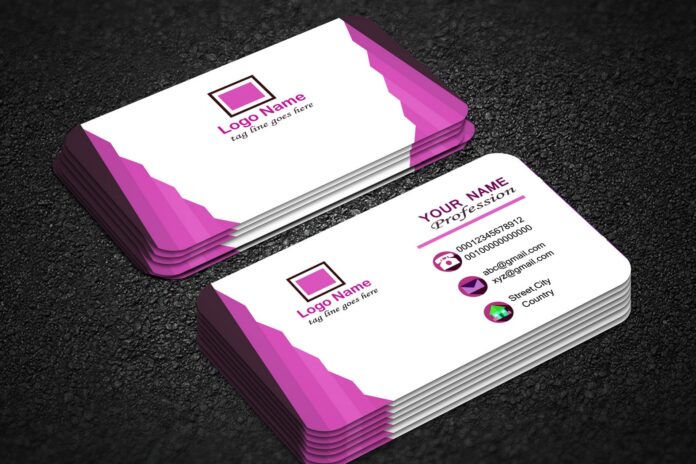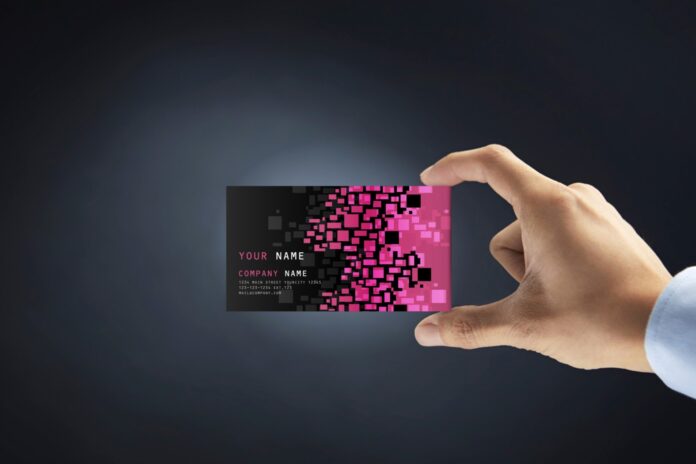Business cards are an important part of making a good first impression when meeting new people. They provide potential customers and business contacts with vital information about your business or services. A well-designed, eye-catching business card can be a powerful marketing tool that sets you apart from the competition. In this article, we will discuss the essential elements of designing a professional business card that will stand out from the crowd.
The Benefits of Business Cards for Professional Use
They are an essential part of any professional’s toolkit. They provide a quick and easy way to make a great first impression, as well as a way to keep in touch with customers and associates. They also serve as a reminder of your services and contact information. Furthermore, having a professionally designed business card can help to make a positive and lasting impression on potential clients and associates.

The Importance of Consistency in Business Card Design
Consistency is key when it comes to business cards. It is important to ensure that your business cards are consistent with your brand and company identity. This includes the design, colours, and fonts used. This will help to create a cohesive look and feel, which will ensure that your business cards stand out in a crowd.
Understanding the Basics of Business Card Design
They are a key part of any professional’s networking toolkit. A well-designed business card conveys a professional image and makes a great first impression. First, consider the size of your card. When it comes to designing eye-catching business cards, it is important to understand the basics of design. It should be professional and aesthetically pleasing. It should reflect your brand and provide potential customers and business contacts with the necessary information about your business or services. Start by considering the size, shape, and orientation of your card. A standard-sized card with a standard orientation (vertical or horizontal) is recommended. Standard business card sizes are 3.5” x 2”, but you can also choose a custom size if desired. Additionally, consider the material that you will use for your card. Common materials include paper, plastic, or metal. Each material has its own advantages and disadvantages; for instance, paper cards are affordable but may not last as long as plastic or metal cards.
Consider Your Brand
When designing a business card, it’s important to consider your overall brand. Your business card should reflect your brand in terms of its colors, fonts, and imagery. Think about how you want people to perceive your brand when they look at your business card. Are you a serious, professional business or a fun, creative one? Your business card should reflect that.

Choosing the Right Colors and Fonts
Choosing the right colors and fonts for your business card is essential for making an eye-catching design. When selecting colors, aim for a combination that is both eye-catching and professional. Bright colors can be used to make the card stand out, but it’s important to keep the overall design cohesive and professional. When selecting fonts, use a combination of both serif and sans serif fonts. Serif fonts are often used for headings and titles, while sans serif fonts are often used for body text.
Using Imagery and Graphics
Using imagery and graphics can make your business card stand out. However, it’s important to use imagery and graphics that are relevant and appropriate for your business. For example, if you are a photographer, you could include a small sample of your work on your card. If you are a web designer, you could include a logo or icon that represents your business. Imagery and graphics should be used sparingly, as to not overwhelm the design.
Choosing the Right Card Stock
The card stock you choose for your business card is just as important as the design. You want to choose a card stock that is durable and of good quality. There are many different types of card stock available, including glossy, matte, and textured. Consider the type of business or services you offer and choose a card stock that reflects the professionalism of your brand.

Incorporating Visual Elements
It should be visually appealing, so consider incorporating a few visual elements. You can include a logo, a photograph, or any other type of graphic that will draw the reader’s attention. Make sure to choose visuals that are relevant to your business or services.
Crafting a Unique Message
Your business card should also include a unique message that will set you apart from the competition. Be sure to include your contact information, a brief description of your business or services, and any other pertinent information that potential customers or business contacts will find useful.
Get Creative with Typography
Typography is an important element of any design. When designing a business card, you should choose a font that is easy to read and that fits with your brand. You could also use a combination of fonts to create contrast and add interest.

Proofreading and Printing
Proofreading and printing are the last steps in creating an eye-catching business card. Take the time to carefully review the design and make sure there are no errors. Additionally, consider the printing process. If you are printing your cards yourself, make sure you have the right materials and equipment. If you are having your cards printed professionally, make sure to select a reputable printing service and provide them with a high-resolution file.
Finishing Touches
Finally, make sure to add some finishing touches to your business card. Consider adding a QR code or a link to your website or social media accounts. This will provide potential customers or business contacts with easy access to more information about your business or services.
By following these steps, you can create a professional, eye-catching business card that will set you apart from the competition. With a well-designed business card, you can make a lasting impression and establish yourself as a professional in your field. You can contact Colourstream for more information.

Business cards are a powerful tool for any professional. They provide an easy way to make a great first impression and are an essential part of professional etiquette. To make the most of your business cards, be sure to craft them with care and use them to promote your services and contact information. With the right approach, it can be an effective way to make a positive and lasting impression.









